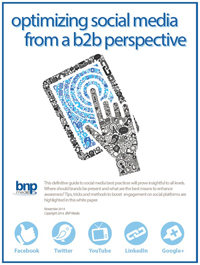This month, I want to offer you the opportunity to get access to suggested specification inserts that will enhance your design engineered product and give the client a more sustainable product. You can find the inserts on my website at www.buildingsmartsoftware.com.
Let's Start At The Very Beginning
Let's start by agreeing what the table of contents should be for the O&M manual during the submittal phase of the construction phase of the job. Why not work through disagreement on the contents at the start of the job, rather than give the owner numerous manuals at the end of the job that really don't fulfill the O&M needs associated with sustainable facility management?Next, let's recognize the build management department is most likely going to use some form of CMMS, because the days of manual maintenance management systems went out with three-piece suits.
If this is the case, why are we specifying O&M manuals made of paper? Sure, we may require them to be put on a CD-ROM, but what does that really do for the facility managers who need equipment databases downloaded into their CMMS? The solution is to require the equipment manufacturer to complete the owner's data retrieval form along with the O&M specific website where they could click on to the manufacturer's website for O&M data.
When it comes to specifying an O&M manual for the building owner, why not require that the manual be built near the beginning of the job rather then the end of the job? The O&M manuals should be built on the job site as the design team accepts equipment submittals. So far when introducing this idea of building the O&M manuals early in the construction phase, contractors have jumped on the bandwagon endorsing this idea because it is one less thing for them to compile at the end of the job.
Barcoding For All!
And how about those useless valve tags that tells you the valve is H-21? The same can be said for laminated nametags on equipment and electrical panels. How useful is this method of identification when the rest of the world identifies their inventories via bar codes?Let's start specifying bar coded identification labels for the building industry. If you don't agree with me, check out the barcoded equipment that shows up at your next construction site. The equipment will have those neat little ID symbols anyway because the manufacturer knows the value of barcoded equipment.
You will find a suggested barcode specification on our website, but how do you get the needed identification database early on in the construction phase?
The answer may be to act when the contractor and associated trade contractors are creating field coordination drawings early in the job. At this point in time, all the equipment and panels will be located, as well as all the control valves and isolation valves will be shown, on these field coordination drawings. Why not create an electronic file of equipment, panels, and valves that require identification tags? Pass this database on to a label manufacturer, and don't forget to pass the database on to the owner, too. The label manufacturer can produce the tags long before the labeling is needed, and the facility manager can download this same database into his CMMS as part of the assets.
What about that CMMS? Does the owner have one? If it's a new building and not an addition or expansion of an existing site, consider specifying a CMMS as part of the O&M process. If you don't, the owner is going to need to hire someone else to do it for you. If the owner already has a CMMS, then it is important to reference this in your specification. Don't keep it a secret. It is imperative that designers ask the question and share the knowledge that the owner has (or has not) a CMMS, and that, one way or another, they know the O&M data will need to be collected in an electronic manner early in the job.
Don't wait until project closeout to begin collecting O&M manuals or do so with no sensitivity to the fact that building owners, just like building designers, use computers and computer software. Put yourself in the owner's shoes, and specify what is needed to provide sustainable facility management in this 21st century. ES



